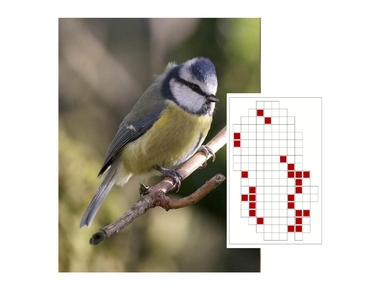Breeding Birds

Blue Tit, along with Blackbird and Chaffinch, is among the most familiar of birds on Arran. Over the last two breeding seasons, records of breeding birds have been sent to me from over three hundred people. Why then is the map generated from all this data showing the confirmed breeding of Blue Tit so sparse? There seem to be lots of “gaps”. The situation is the same for lots of our common birds. In some places the habitat may not be appropriate but in others it may reflect the fact that people tend not to report the common birds and so they get overlooked.
This breeding season from April to July inclusive I am encouraging you to report all signs of breeding. These signs include male birds singing, courtship and display between pairs, nest building, adults carrying food, used nests and recently fledged young. While doing this please keep disturbance to an absolute minimum. In the breeding season no birds should be disturbed from the nest in
case opportunities for predators to take eggs or young are increased. In terms of the Wildlife and Countryside Act (1981) and the Nature Conservation (Scotland) Act 2004 disturbance at or near the nests of birds is a criminal offence.
To sum up, the Arran Natural History Society would like to produce an Arran Bird Atlas for the wintering and for the breeding birds on Arran, based on the procedures being used for the national BirdAtlas 2007-2011 http://www.bto.org/birdatlas/ No matter what your knowledge is of birds you can help by sending in your sightings of signs of breeding birds, particularly common birds. Even if everyone sent the information on birds they see in their gardens, this would fill many “gaps”. This would help to ensure that the records for Arran are as accurate and comprehensive as possible.
Over the coming breeding season, April to July, please send all notes of signs of breeding to me. Please visit the website http://arranbirding.blogware.com/blog/ArranBirdAtlas The data from the first two breeding seasons is there. You should be able to use it to find out about the “gaps” and “missing species” in your area.
Thank you in anticipation of your help.